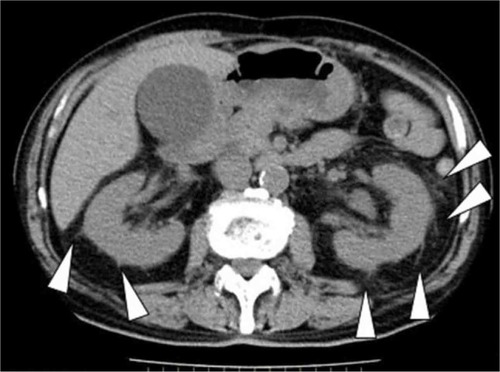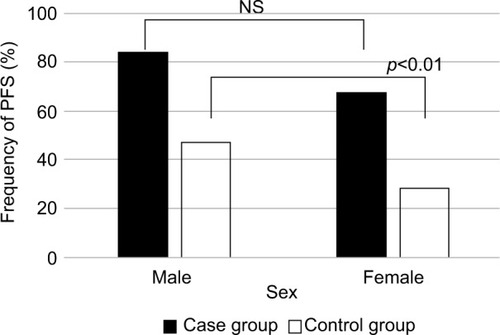Figures & data
Figure 2 Flowchart showing participant screening for this study.

Table 1 Patient characteristics
Table 2 Sensitivity, specificity, and positive likelihood ratio of PFS to diagnose acute pyelonephritis for all enrolled patients
Figure 3 Frequency of PFS by age group.

Figure 5 Frequency of PFS by eGFR.

Table 3 Patient characteristics adjusted by age, sex, and renal function using the propensity score analysis
Table 4 Sensitivity, specificity, and positive likelihood ratio of PFS to diagnose acute pyelonephritis after propensity score adjustment for age, sex, and renal function
Table 5 Frequency of causative bacteria


